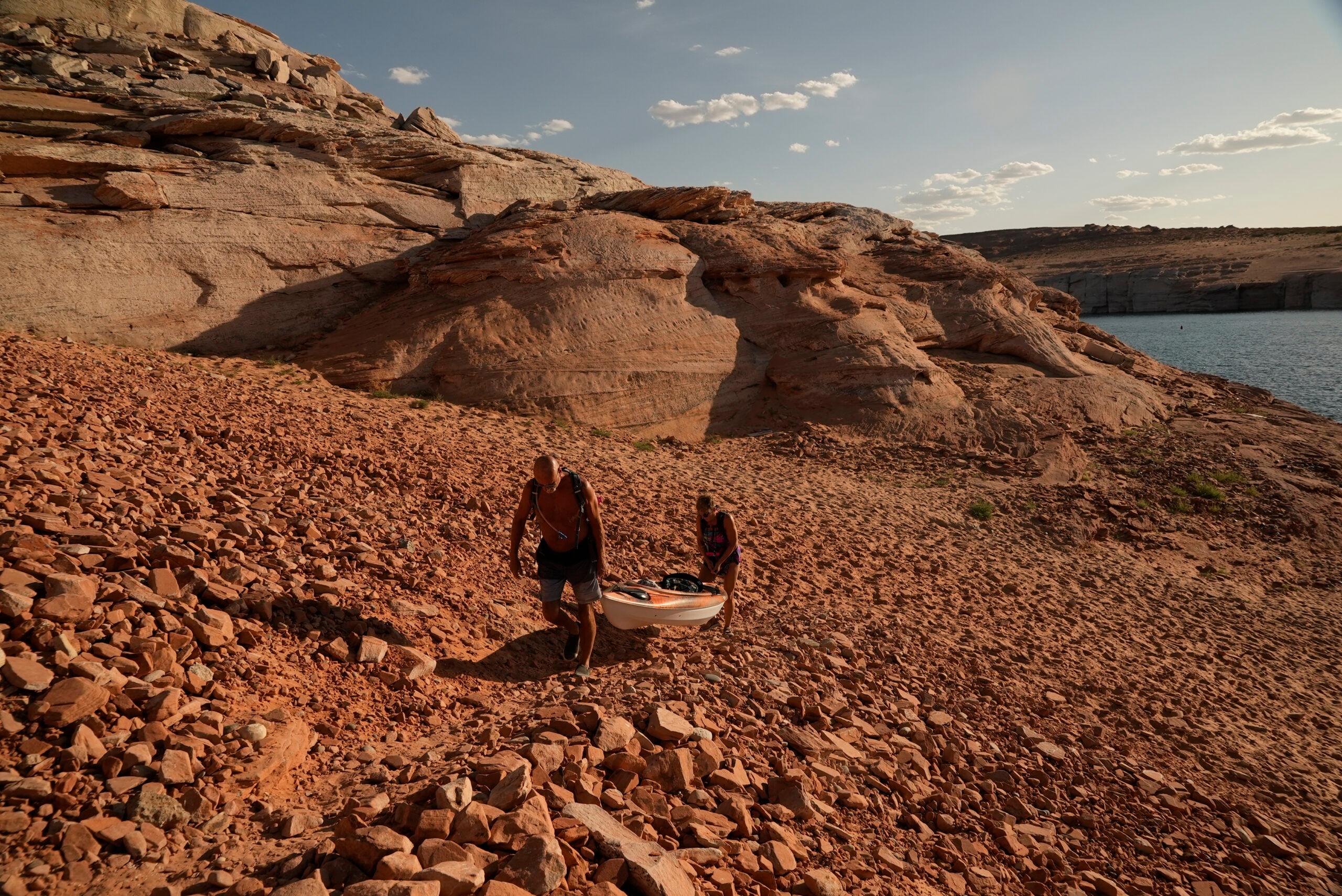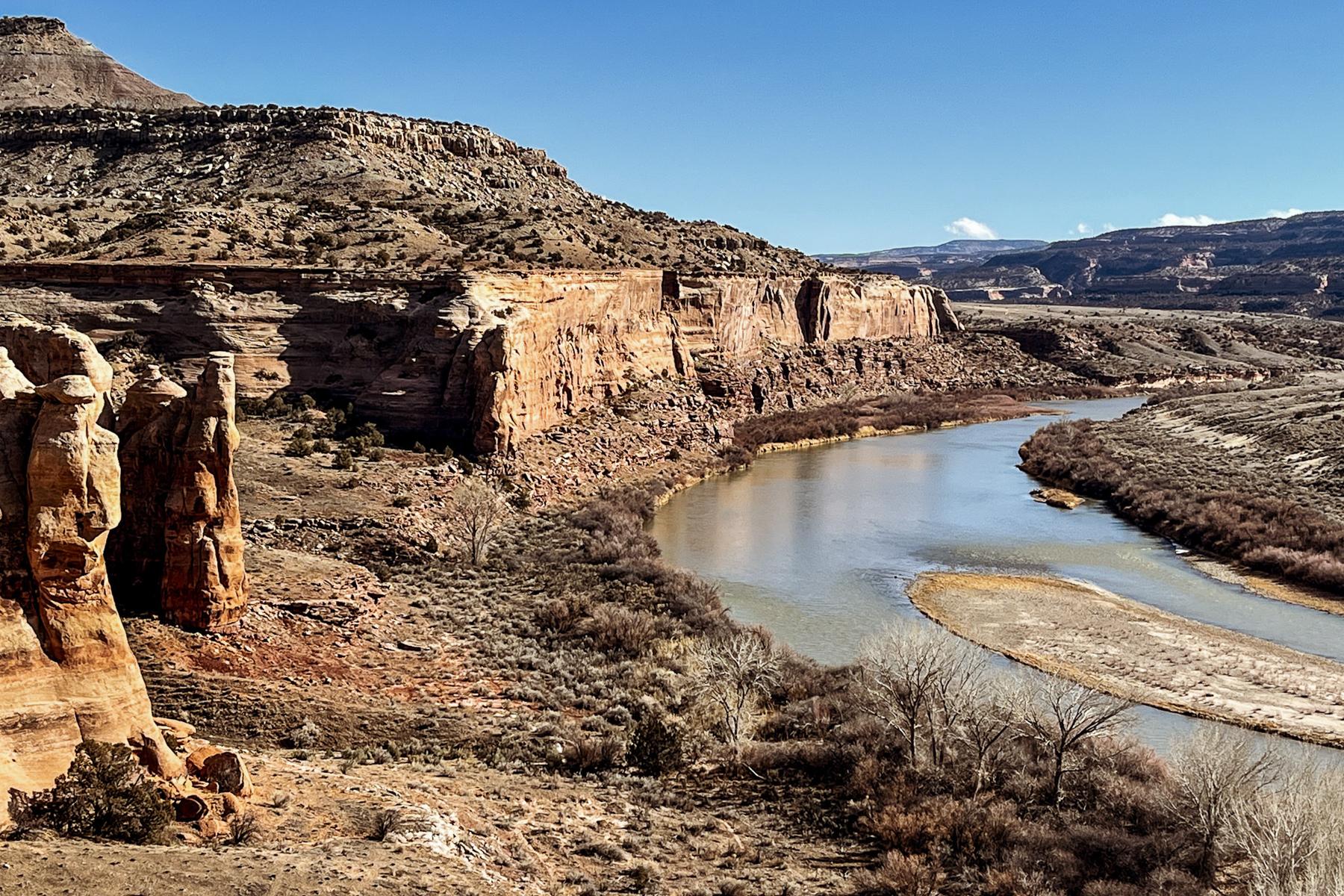
Federal officials on Tuesday announced new water cuts to states that rely on the Colorado River in a suite of emergency moves to reinforce reservoirs that have hit record-low levels due to climate change and decades of drought.
The move from the U.S. Bureau of Reclamation is based on an updated forecast of river flows and climate conditions throughout the river basin. The announcement comes as the seven states that share the Colorado River missed a deadline to deliver a basin-wide plan to dramatically reduce their use of river water to protect the nation’s two largest reservoirs, a setback that could trigger additional cuts from the federal agency.
The water cuts are aimed at Arizona and Nevada, which will lose 21 percent and 8 percent of their annual allotment of Colorado River water. Mexico, which also receives water from the river, will see its annual allotment reduced by 7 percent, federal officials said. Farmers in central Arizona are expected to shoulder most of the additional cuts, as they did earlier this year when water releases were due to low reservoir levels.
Earlier this summer, U.S. Bureau of Reclamation Commissioner Camille Touton gave the states two months to figure out how to stop using 2 to 4 million acre-feet of Colorado River water to help prop up the reservoirs — or face the prospect that the federal government would step in and make the cuts itself.
On a call with reporters Tuesday, Touton acknowledged the states' failure to produce a plan to stabilize the system and said the agency would continue to work with state water managers on potential solutions.
Without a basin-wide conservation plan, Touton said the agency is starting “multiple processes” to find additional ways to increase water levels in the reservoirs. “I want to be very clear, our actions to initiate these steps do not preclude that the solution to this basin is one of partnership,” she said.
In July, Colorado and other states in the upper basin — New Mexico, Wyoming and Utah — released a plan detailing how they would contribute to the water cuts federal officials demanded. The plan included pursuing programs to pay farmers, ranchers and other water users to conserve but stopped short of proposing new water-use restrictions. Water managers in the upper basin pinned most of the responsibility for bolstering Colorado River reservoirs on lower-basin states, which they said had more ability to make the federally mandated cuts because they use most of the water.
Water managers in Arizona, California and Nevada failed to agree on a plan to cut water in the lower basin after weeks of heated negotiations.
Southern Nevada Water Authority general manager John Entsminger wrote a strongly worded letter to Touton and U.S.Secretary of the Interior Debra Haaland. In the letter, Entsminger wrote that despite the obvious urgency of the Colorado River situation, no meaningful collective action happened over the last two months to “forestall the looming crisis.”
“Through our collective inaction, the federal government, the basin states and every water user on the Colorado River is complicit in allowing the situation to reach this point,” Entsminger wrote.
New forecasts from the Bureau of Reclamation suggest there's a possibility that Lake Powell won't have enough water in it by the fall of 2023 to keep hydropower turbines spinning. If that happens, water would instead need to move through bypass tubes to make its way to states downstream. University of New Mexico water researcher John Fleck said the federal agency has "made it clear it does not trust" the reliability of the reservoir's infrastructure to get water to Nevada, California and Arizona.
How might the federal government impose even greater water cuts now that the states have failed to provide a basin-wide plan to stabilize the system?
The Colorado River is split in two, with the states downstream of Lake Powell and Lake Mead getting their water from the reservoirs. The dams that create these reservoirs are federally managed, so Reclamation officials have the authority to change how much water is released to Nevada, California and Arizona if they want to keep more water in Lake Mead.
Holding water in Lake Mead instead of releasing it would mean water users in those states would be forced to enact restrictions.
It’s less clear how the federal government could impose water cuts in Colorado, New Mexico, Utah and Wyoming — states upstream of the nation’s two largest reservoirs. The Bureau of Reclamation controls many reservoirs, water diversion systems and irrigation projects in upper-basin states, including ones on Colorado’s Western Slope. Eric Kuhn told Aspen Journalism those water projects “are the projects at risk.”
That list includes the Fryingpan-Arkansas Project, which provides water to Aurora and Colorado Springs and the Dolores Project, which provides water to the Towaoc area on the Ute Mountain Ute Reservation in southwest Colorado.
The U.S. Department of Interior called for an emergency water release from Colorado's largest reservoir, Blue Mesa outside of Gunnison, in the summer and fall of 2021 to shore up levels in Lake Powell.
Tuesday’s announcement from the Bureau of Reclamation did not detail how federal cuts might play out in the upper basin. Tanya Trujillo, the Assistant Interior Secretary for Water and Science, said she appreciated the plan put forward by the upper-basin states but said states need to do more to conserve water.
If the federal government does need to release more water from the upper basin to protect the Colorado River, she said the agency would work with state water managers to create a plan that gives them as much flexibility as possible.
“We need to be creative and as innovative as possible because we are facing truly unprecedented conditions in this basin,” Trujillo said.
More about the Colorado River
- The most endangered river: A conservation group considers the Colorado River the epicenter of the nation’s water and climate crisis.
- Lake Powell dangerously low: As the reservoir dries up, there’s growing concern about the future of hydropower production.
- What happens if the river keeps drying up: It could trigger a chain-reaction of legal wrangling that could lead to some water users being cut off from the river.
- Tribes fight for inclusion: Leaders of native tribes who depend on the river say a century-old agreement is fueling water inequalities.
- Where’s the water going?: Much of it gets absorbed by soil baked dry by hotter temperatures due to climate change.









